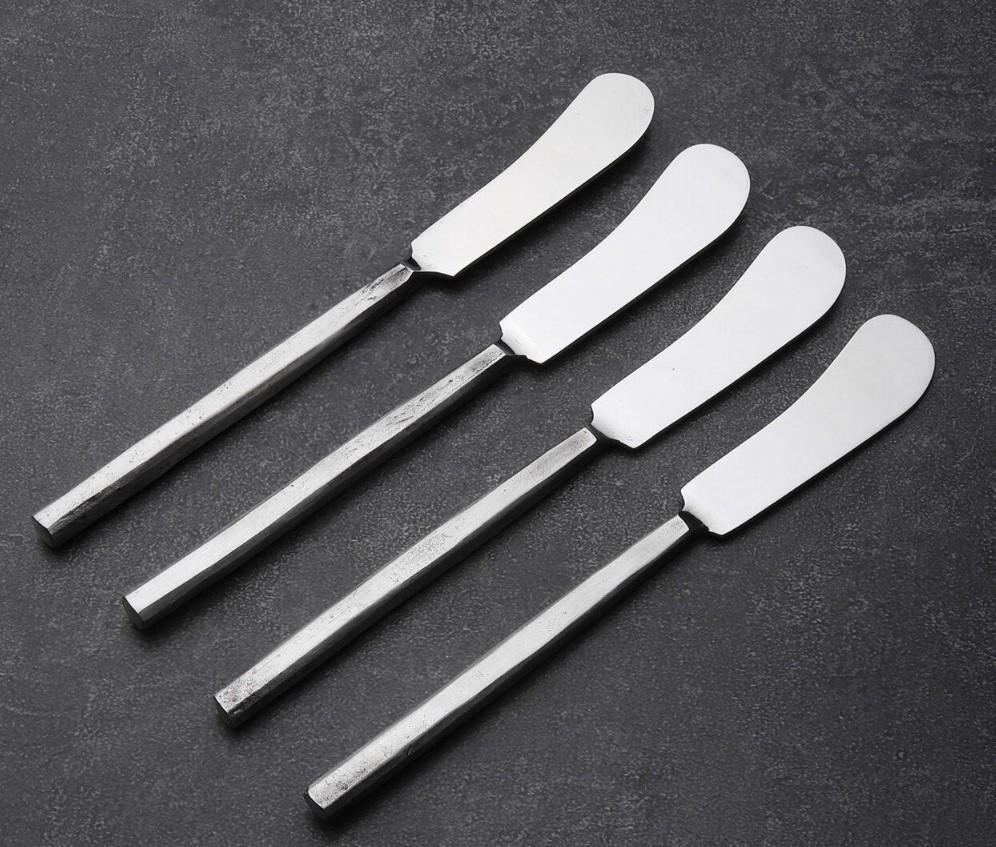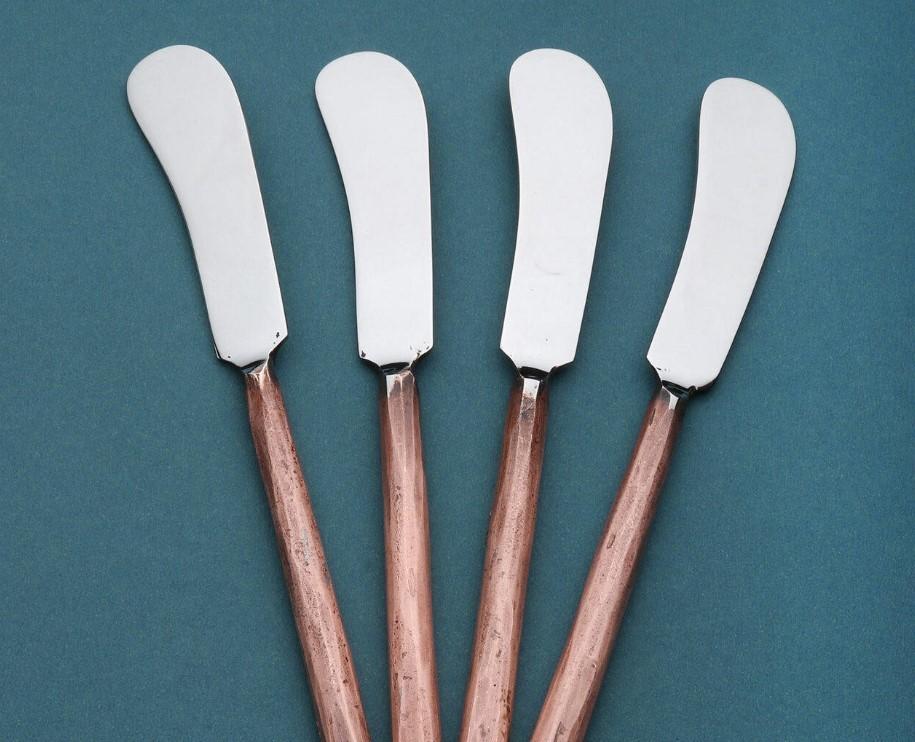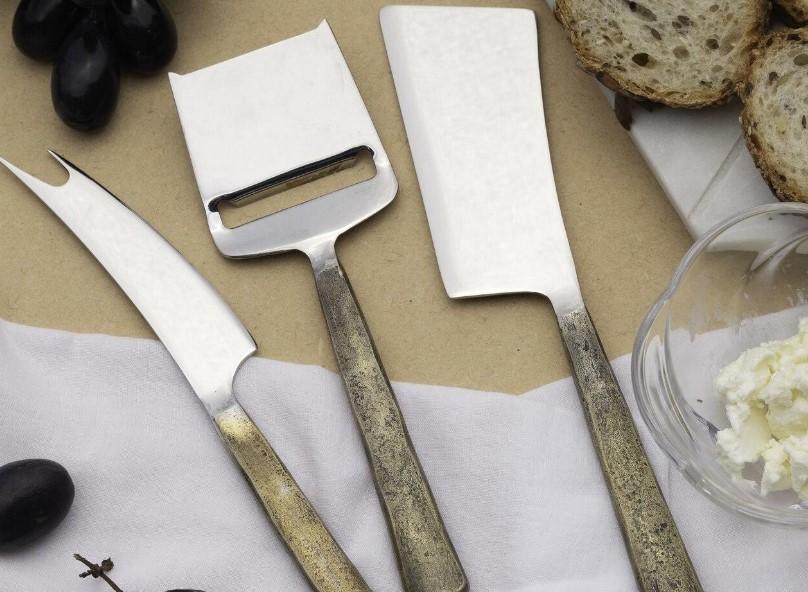The Characteristics And Uses Of These

Two Types Of Knives Offered By Inox Artisans






Set of butter knives are typically smaller and flatter than regular knives, with a dull edge and rounded tip.
They are used for spreading butter or other soft spreads on bread, toast, or crackers.
The shape of the blade is designed to prevent tearing or damaging the surface of the bread or other soft foods.

Cheese knives come in a variety of shapes and sizes, but they all have a few common characteristics.
They are designed to cut through different types of cheeses, including hard, soft, and crumbly varieties.
They often have a sharp, pointed tip for piercing the cheese, a serrated or straight edge for cutting, and a sturdy handle for applying pressure.



There are several types of cheese knives, each with a specific purpose:
Soft cheese knives: have a narrow blade with a forked tip for slicing and serving soft cheeses like Brie and Camembert.
Hard cheese knives: have a short, sturdy blade for breaking off chunks of hard cheese like Cheddar and Parmesan.
Cheese planes: have a flat blade for slicing thin, even pieces of cheese like Gouda and Swiss.
Cheese cleavers: have a thick, wide blade for cutting through hard, dense cheeses like Gruyere and Manchego.



Butter knives are best used for spreading soft, creamy spreads like butter, jam, or cream cheese.
They are also useful for spreading condiments like mustard or mayonnaise on sandwiches.
You can use a butter knife for cutting soft fruits like bananas or avocados, but it may not be as effective as a regular knife.





Cheese knives are specifically designed for cutting and serving different types of cheese.
They are ideal for entertaining or serving a cheese platter at a party or gathering.
Cheese knives can also be used for cutting other foods like fruits, vegetables, and meats, but they may not be as efficient as regular knives.


Both butter knives and cheese knives should be washed and dried thoroughly after each use.
Butter knives can usually be washed in a dishwasher, but cheese knives should be washed by hand to prevent damage to the blade.
It's also important to sharpen cheese knives regularly to maintain their effectiveness.

In conclusion, butter knives and cheese knives are two distinct types of knives with different shapes, sizes, and purposes.
Understanding the differences between these two types of knives can help you choose the right tool for the job and make entertaining and meal preparation easier and more efficient.




